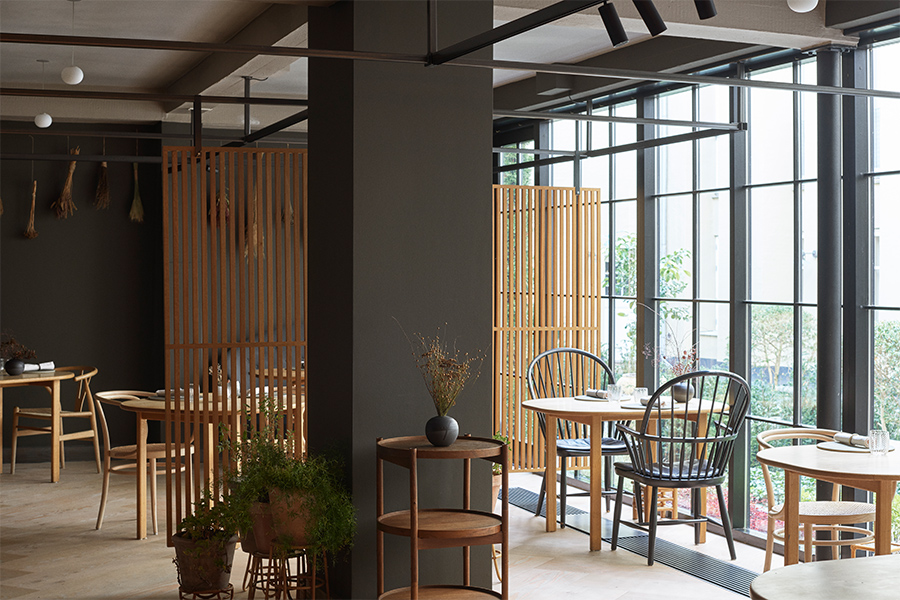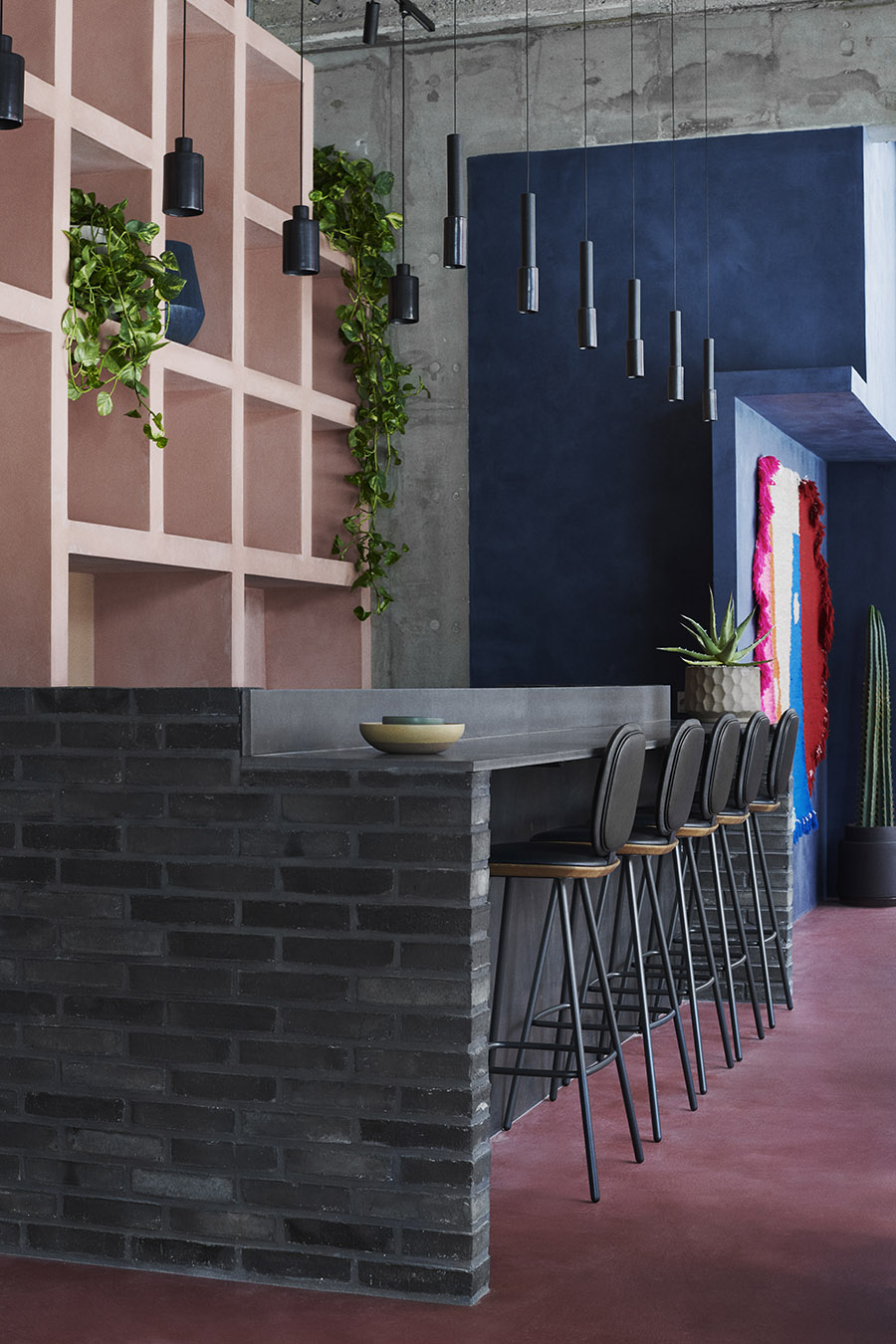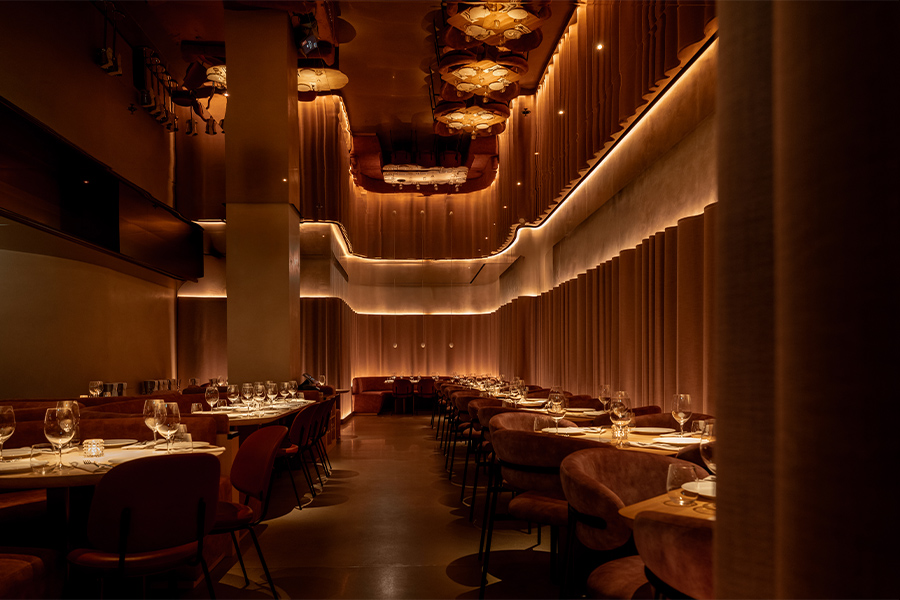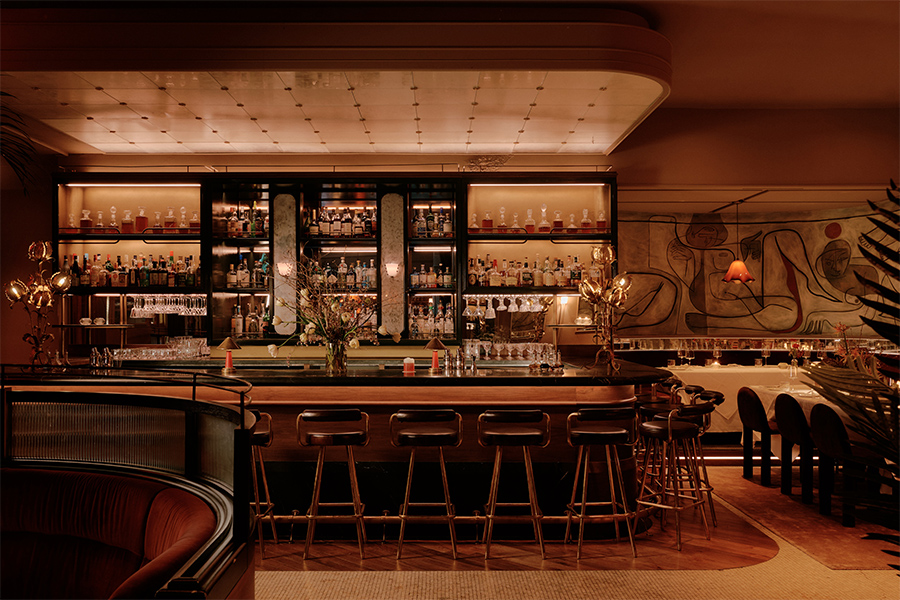As one of the world’s most coveted dining destinations, Noma has undoubtedly helped shape Copenhagen’s reputation as a culinary mecca, and 2020 was no exception for vibrant new arrivals.
OEO Studio was behind two of those, including Hija de Sanchez Cantina from Noma alum chef Rosio Sanchez, which subtly references Mexican architecture, and the revamp of Kadeau, where the local firm swathed chef Nicolai Nørregaard’s restaurant in hues of burnt red and clay and added a wine room decked out with hot rolled steel surfaces.

The updated Kadeau features a design by OEO Studio
Quality cuisine paired with such warm, approachable design is the norm in Copenhagen, and now dining concepts are becoming even more democratic. Take Hverdagen. Completed in 2019 by local studio Vermland, it cements the notion of everyday organic cooking through minimalist furniture crafted entirely from one Douglas fir tree. POPL Burger is another. During the pandemic, Noma’s René Redzepi unveiled this pop-up with the simplest of menus, yet the response was so great that it grew into a brick-and-mortar joint. Local studio Spacon & X handled the design of this former warehouse, sprucing up concrete pillars with a plant bridge and working with Frankfurt, Germany-based E15 on custom furniture.
“Building upon the success of its fine dining scene, very serious Copenhagen chefs have been exploring more everyday foods in a serious manner. We have places like burger restaurants and ramen bars pushing boundaries. The design has followed that lead,” says Spacon & X partner Malene Hvidt.

For chef Rosio Sanchez’s Hija de Sanchez Cantina, OEO Studio mixed dusty rose and ultra-marine blue hues
Equally colorful hotels are also in the works. 25hours Hotel Round Tour, designed by local architects BBP Arkitekter and London- and New York-based Martin Brudnizki Design Studio, is on deck for early 2022, opening in what most recently housed Copenhagen University’s Faculties of Theology and Law. “The design takes the romanticized spirit of 1968 and melds it with patterns and colors of the era to create contextual hotel interiors—both to the city and the building it sits in,” says Brudnizki.



